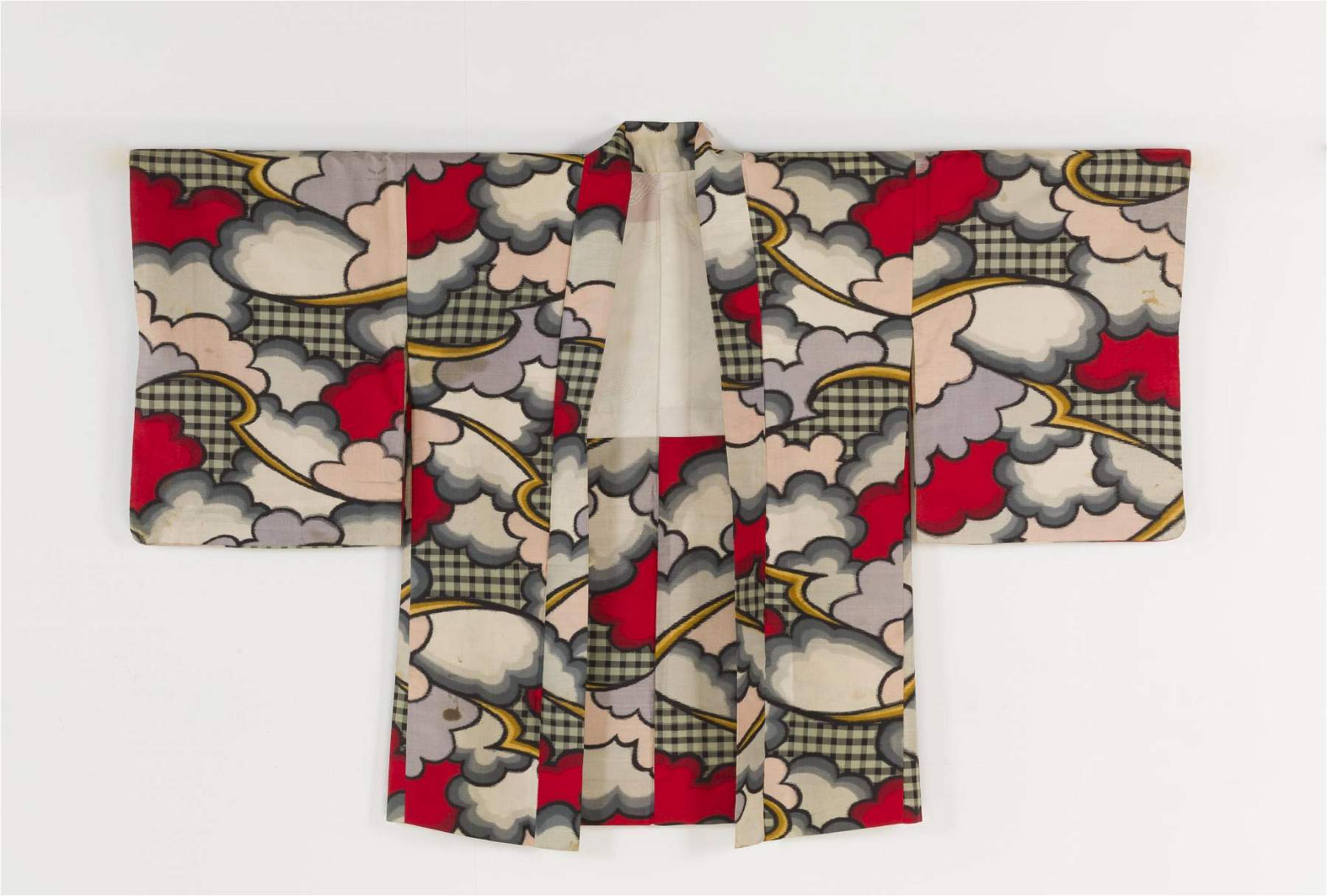The Museum of Fashion and Applied Arts in Gorizia offers an exhibition entirely dedicated to kimonos, from November 21, 2018 to March 17, 2019. Not just any kimonos, but those produced in Japan between 1900 and the 1940s, pieces that reflect the imperial desire to Westernize the country. The exhibition is titled Occidentalism. Modernity and Western Art in the Kimonos of the Manavello Collection. 1900-1950.
Just as, in the previous century, Japaneseism had deflagrated throughout Europe, influencing a significant part of artistic production, at the beginning of the 20th century Western taste exploded in Japan. And this flurry of novelty invests even the tradition’s symbolic garment: the kimono. Traditional motifs are flanked by colorful designs that recall, pointedly, Cubism, Futurism and other European artistic currents. There is also a unique kimono celebrating the Rome-Berlin-Tokyo tripartite pact of 1940, where the Italian flag is half-hidden inside the seams while the Rising Sun and the swastika stand out everywhere.
So much has been said and written aboutOrientalism and specifically Japonisme, or the influence of Japanese arts on European arts in the late nineteenth and early twentieth centuries, but little is yet known about the inverse relationship, or that complex and multifaceted phenomenon that led certain Japanese arts to assimilate forms and content of a distinctly Western matrix: it happened with painting, which originally interpreted the lesson of perspective, and it happened with kimonos, which, more than any other art form, were influenced by the changing Japanese society of the time by faithfully transferring its effects to the fabric, which was used in the same way as a pictorial surface.
Among the very few museums dedicated to fashion in the country, the Fashion Museum in Gorizia is now also the first Italian museum to investigate a very special sector of art, offering the public a new and surprising glimpse of cultural history. The period is one of the most complex and troubled in Japanese history, namely that of the transition from feudal state to feared superpower, culminating in World War II.
From a socio-cultural perspective, the Land of the Rising Sun lived this time frame (late 19th century/early 1940s) with a conflicted attitude, poised between the thrill of novelty from overseas and the reassuring attachment to tradition.
In the Western collective imagination, the kimono represents the very icon of Japan in its persuasive guise of refinement and exoticism. But few know that a conspicuous portion of the kimonos produced within the first half of the twentieth century, that is, Meisen kimonos, decisively escapes this category, adopting fantasies suggested byAvant-garde movements (ranging from the Viennese Secession to the Glasgow School, from Futurism to Cubism, from Divisionism toAbstractExpressionism of Jackson Pollock), inspired by contemporary facts of history or even by technological achievements, in an exciting and most surprising kaleidoscope of colors, patterns, decoration and weaving techniques, also inspired by Western textile production.
The exhibition presents 40 pieces, including kimonos and haori (overkimonos), a particularly significant selection from the context illustrated, to acquaint the public with a hitherto little-explored sector of Japanese textile production. The garments on display are fine robes, intended for an upper-middle class, not made for export. They could have been appreciated by people of a certain culture or even simply curious or eager to appear up to date. They certainly all had a vision: their country on par with the great nations of the world, able to assimilate their knowledge, their customs but with pride in their own diversity.
The 40 exhibits, along with obi, prints, illustrations and magazines, come from an important Italian collection, the Manavello Collection. That collection as a whole is far more numerous, including men’s, women’s and children’s garments, both traditional and non-traditional, objects and furnishings pertaining to dress and its context, such as footwear and hair accessories, tea ceremony items, dolls and paper documentation. For all information you can click on this link.
Pictured: a haori, informal women’s overkimono (1950s-1960s; silk taffetas, viscose taffetas lining, reserve on groups of threads - shibori - in warp and weft, katagami on weft before weaving; Manavello Collection). Photo by Luigi Vitale
 |
| An exhibition on kimonos from the first half of the 20th century in Gorica |
Warning: the translation into English of the original Italian article was created using automatic tools. We undertake to review all articles, but we do not guarantee the total absence of inaccuracies in the translation due to the program. You can find the original by clicking on the ITA button. If you find any mistake,please contact us.